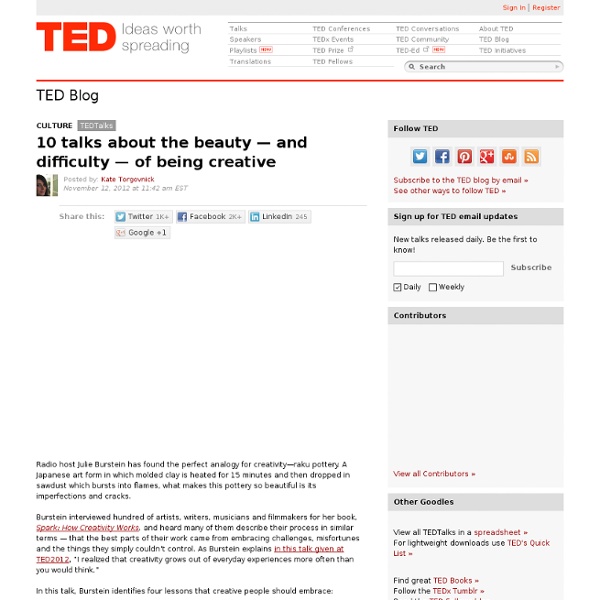Research--You're Doing It Wrong. How Uncovering The Unconscious Is Key To Creativity
Businesses invest billions of dollars annually in market research studies developing and testing new ideas by asking consumers questions they simply can’t answer. Asking consumers what they want, or why they do what they do, is like asking the political affiliation of a tuna fish sandwich. That’s because neuroscience is now telling us that consumers, i.e., humans, make the vast majority of their decisions unconsciously. Steve Jobs didn’t believe in market research. Marketers are living a delusion that the conscious mind, the self-chatter in their heads and the so-called “verbatims” in surveys and focus groups, are the guiding forces of action. Einstein once said: “The intuitive mind is a sacred gift and the rational mind is a faithful servant. I know this firsthand because I have been “that guy.” I found it not in the research of marketers but in the research of cognitive authorities in evolutionary psychology, neurobiology, and behavioral economics.
Irrelevant Ideas Lead To Breakthroughs
At Reebok, the cushioning in a best-selling basketball shoe reflects technology borrowed from intravenous fluid bags. Semiconductor firm Qualcomm’s revolutionary color display technology is rooted in the microstructures of the Morpho butterfly’s wings. And at IDEO, developers designed a leak-proof water bottle using the technology from a shampoo bottle top. These examples show how so-called “peripheral” knowledge — that is, ideas from domains that are seemingly irrelevant to a given task — can influence breakthrough innovation. “The central idea of peripheral knowledge really resonates,” says Wharton management professor Martine Haas. Haas and Wharton doctoral student Wendy Ham approached that problem by attempting to define the conditions under which peripheral knowledge is likely to influence breakthroughs. Haas and Ham began mulling this question while conducting research at global advertising firm Saatchi & Saatchi — a font of fresh ideas, Haas recalls. Stocks vs.
4 Ways To Amplify Your Creativity
The holidays are over, the weather is lousy, and we’re sober again. We made all kinds of New Year’s promises, but the big one that will change our careers, if not our lives, is the promise to ourselves to become more creative. In my new book, Creative Intelligence, I show that creativity is learned behavior that gets better with training--like sports. The huge national policy storm brewing over “dwindling innovation” and an “innovation shortfall” also gives creativity an even greater agency. So here are four specific ways to lead a more creative life and boost your creative capacities. 1. Nearly every creative entrepreneur, artist, musician, engineer, sports players, designer, and scientist works with one, two, or a handful of trusted people, often in a small space. So you need to engage with creative people. Managers need to identify and promote the creative circles within their organizations. 2. Successful creativity requires scaling your new concept into an actual product. 3. 4.
4 Steps To Breakthrough Ideas
Gentile has since managed the R&D efforts of new technologies for toy products, theme parks, computer input devices, video games, 3-D web graphics technology, and virtual reality systems, along with their related consumer launch and marketing campaigns. These products have generated over $5.2 billion in retail sales. You have likely come across some of his work. So, when I got a chance to sit down with Gentile and pick his brain for a couple of hours, I felt like a young monk climbing the mountain to learn the secret. Step 1: Change the question Gentile was once asked by some researchers to help them figure out how they might commercialize robots they had been working on. Step 2: Find a new metaphor Like many great innovators, Gentile navigates the world through metaphors linking the physical and digital worlds, personal and work lives, fluidly through analogy. Step 3: Reuse what you have We associate invention with “new,” but often the most promising inventions repurpose the old. 1.
3 Storytelling Tips From "Breaking Bad" Creator Vince Gilligan
During our recent chat with Breaking Bad creator Vince Gilligan on subject of the fifth and final season of the show, he illuminated several storytelling principles that have helped make the series such a success. Here are a few of them. Keep Getting to Know Your Characters While strong characters are essential to any good story, rigidity when it comes to character development can be dangerous. Instead, Gilligan suggests writers allow themselves to get to know their characters over time. Make It Your Mission To Surprise Predictability has become a hallmark of network television, but Gilligan has been trying to constantly surprise his audience. Embrace Curveballs Gilligan says that while working on Breaking Bad, he’s frequently been thrown curveballs.
How Remix Culture Fuels Creativity and Invention: Kirby Ferguson at TED
by Maria Popova From Bob Dylan to Steve Jobs, or how copyright law came to hinder the very thing it set out to protect. Remix culture is something I think about a great deal in the context of combinatorial creativity, and no one has done more to champion the popular understanding of remix as central to creativity than my friend and documentarian extraordinaire Kirby Ferguson. So I’m enormously proud of Kirby’s recent TED talk about his Everything is a Remix project, exploring remix culture, copyright and creativity — watch and take notes: The Grey Album is a remix. It is new media created from old media. One thing to pay particularly close attention to are the many examples of how liberally and broadly Bob Dylan borrowed from other creators, appropriating, modifying, and building upon their work: It’s been estimated that two thirds of the melodies Dylan used in his early songs were borrowed — this is pretty typical among folk singers. Donating = Loving Share on Tumblr



